Pedro Alvares Cabral: The Lucky Lost Navigator Who Made Brazil Portuguese
Pedro Alvares Cabral was a Portuguese explorer and navigator who lived between the 15th and 16th centuries. He is generally given credit for being the first person from Europe to have ‘discovered’ the area which is today the country of Brazil. Cabral’s discovery of this new land had a huge impact on the colonial history of Portugal, as the coffers of the empire were filled with its resources. But the amateur navigator had no intention of reaching this particular far off land.
His Family Roots
Pedro Alvares Cabral was born in 1467/1468 in Belmonte, Portugal, and was the second son of Fernao Cabral and Isabel de Gouveia. The Cabrals were a noble family whose members had been in the service of the Portuguese throne for many generations. Thanks to his family’s status, Cabral was educated at the royal court, and in 1497, was appointed as a member of King Manuel I’s council.
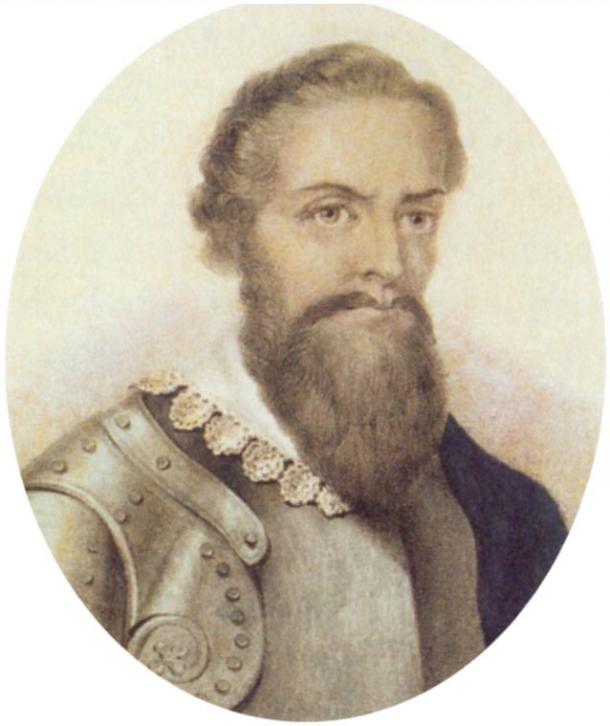
Pedro Álvares Cabral. (Public Domain)
In July of the same year, another famous explorer, Vasco da Gama, left Lisbon with a small exploratory force of four ships and about 170 men. His mission was to verify if there was an ocean route that connected Europe to Asia, which he succeeded in doing, having rounded the Cape of Good Hope, and arriving in Calicut, India, in 1498.
- Did Early Transatlantic Explorers Drop This Mysterious Tablet in the Brazilian Jungle?
- Explorers That Found Ancient Lost City of the Monkey God Almost Lose Their Faces to Flesh-Eating Parasite
- Did This Ancient Explorer Make It to The Arctic In 325 BC?
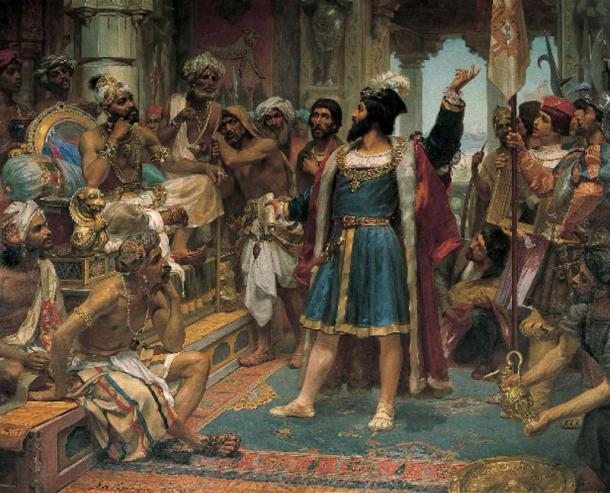
‘Vasco da Gama before the Zamorin of Calicut’ by Veloso Salgado, Sociedade de Geografia de Lisboa. (Public Domain)
Taking Command
In 1500, the Portuguese king decided to follow up on da Gama’s voyage, and an expeditionary force of 13 ships and about 1200 men was assembled. This fleet was placed under the command of Cabral, who is believed to have had little to no sailing experience at that point of time. It has also been suggested that he was chosen due to his connection and loyalty to the king.
In any case, the fleet left Lisbon on the March 9, 1500. Cabral was in possession of navigational charts containing the information collected from the voyages of Christopher Columbus, Vasco da Gama, and Bartolomeu Dias (who, incidentally, was a captain on one of Cabral’s vessels), and was supposed to follow the route da Gama had taken in 1497. However, the fleet sailed too far southwest into the Atlantic by mistake.
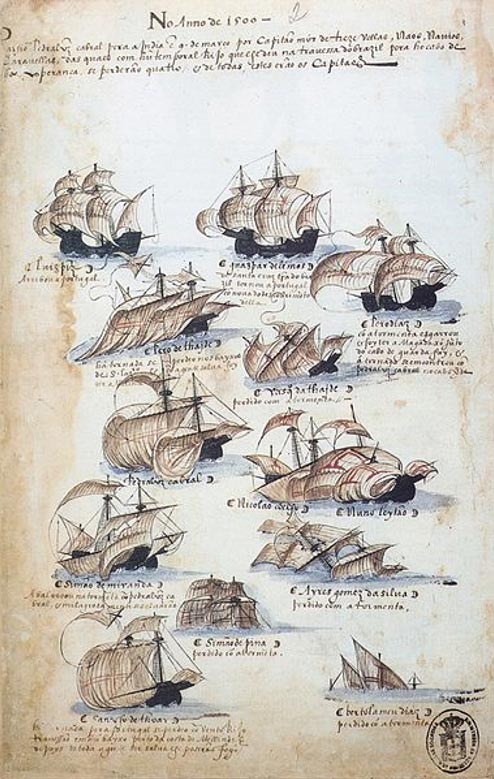
The fleet commanded by Pedro Álvares Cabral. (Public Domain)
What Did Pedro Alvares Cabral Discover?
As a result of this error, Cabral arrived not in India, as initially planned, but in an area of the South American coast that was previously unknown. On April 22, Cabral sighted land, and his fleet made anchor at Porto Seguro, which is situated on the coast of the modern Brazilian state of Bahia.
As this area ‘belonged’ to the Portuguese, in accordance with the Treaty of Tordesillas, Cabral and men went ashore, erected a large wooden cross on the beach, and claimed it for Portugal. Believing that the land he had discovered was an island, Cabral named it the Island of the True Cross. Its name was subsequently changed to Holy Cross by King Manuel, and finally became Brazil, which is the name of a dyewood native to the country.
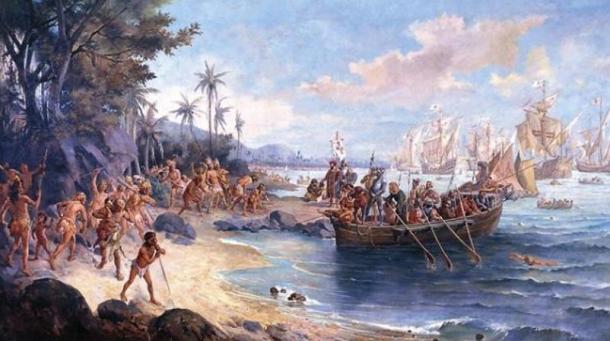
‘Landing of Pedro Álvares Cabral in Porto Seguro, in 1500’ (1922) by Oscar Pereira da Silva. (Public Domain)
Cabral stayed in Brazil for 10 days, during which he met with the natives, and sent a ship back to Portugal to inform the king about his discovery. After that, Cabral continued his journey to India. The voyage went smoothly until they arrived at the Cape of Good Hope, where the fleet was caught in a terrible storm that sunk four of Cabral’s ships, including the one commanded by Dias. The survivors continued their voyage eastwards, during which the ship commanded by Diogo Dias was separated from the rest of the fleet due to bad weather and ended up discovering the island of Madagascar.
- Mystery of island visited by 15th Century Chinese Explorer Zheng He now solved
- The Calusa People: A Lost Tribe of Florida that Early Explorers Wrote Home About
- A Traveler Even After Death? The Two Tombs of Vasco da Gama
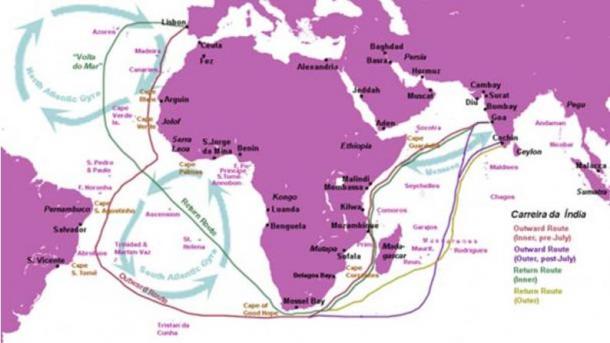
Map showing various outward and return voyages of the Portuguese 'Carreira da India' ('India Run') in the 16th century. (Walrasiad/ CC BY 3.0 )
The remaining ships in Cabral’s expeditionary force finally arrived in India in September 1500, where they were able to trade for spices. In January of the following year, Cabral’s six remaining ships were fully loaded, and began their journey back to Lisbon. In late June, the remaining ships (four, as two had foundered along the way) arrived in the Portuguese capital.
Pedro Cabral
The king was pleased with the outcome of this venture, despite the heavy losses. A new expedition to India was planned, and the king is said to have been inclined to appoint Cabral as its commander. In the end, however, it was da Gama who led this expedition. Cabral left the king’s court and retired to his estate in the province of Beira Baixa. He lived the remaining years of his life there peacefully and died in 1520.
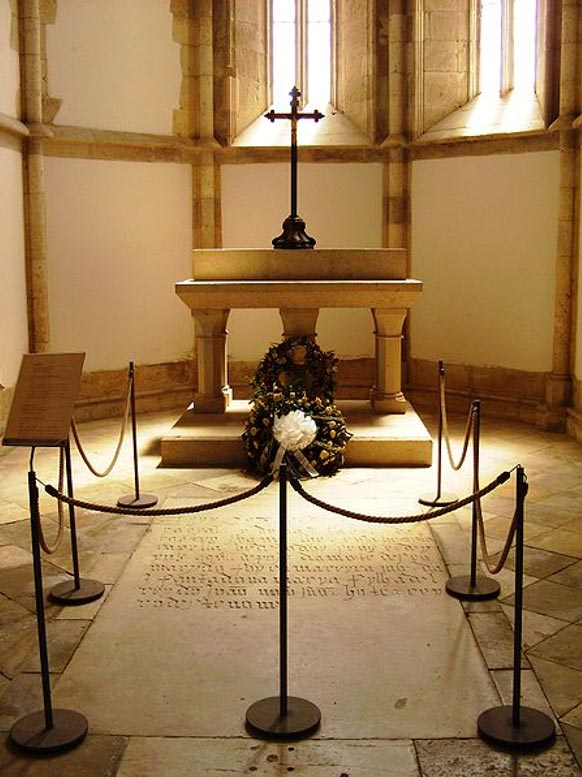
Cabral's tomb in Santarém, Portugal. (Public Domain)
Top Image: ‘Discovery of Brazil.’ Pedro Álvares Cabral sees the land that would later be known as Brazil for the first time. Source: Public Domain
By Ḏḥwty
References
Calmon, P., 2015. Pedro Álvares Cabral. [Online]
Available at: https://www.britannica.com/biography/Pedro-Alvares-Cabral
Cavendish, R., 2000. Cabral Discovers Brazil. [Online]
Available at: https://www.historytoday.com/richard-cavendish/cabral-discovers-brazil
Siteseen Ltd, 2018. Pedro Alvares Cabral. [Online]
Available at: http://www.elizabethan-era.org.uk/pedro-alvares-cabral.htm
The Mariners' Museum & Park, 2018. Pedro Álvares Cabral. [Online]
Available at: https://exploration.marinersmuseum.org/subject/pedro-alvares-cabral/
www.famous-explorers.com, 2018. Pedro Álvares Cabral - Portuguese Explorer. [Online]
Available at: http://www.famous-explorers.com/famous-portuguese-explorers/pedro-alvares-cabral/


















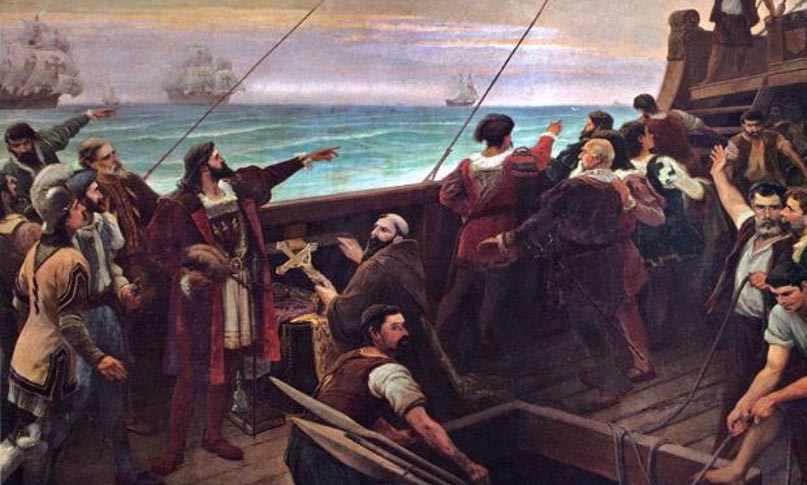

Comments
So Cabral thought that Brazil was an Island whenhe landed in the area known today as the state of Bahia, and named it “Holy Cross” These Europeans usually founded all of these INHABITED lands by mere accident, and always trying to go to India. No wonder they called the American natives Indians, and the name still stuck to the present day...
Charles Bowles